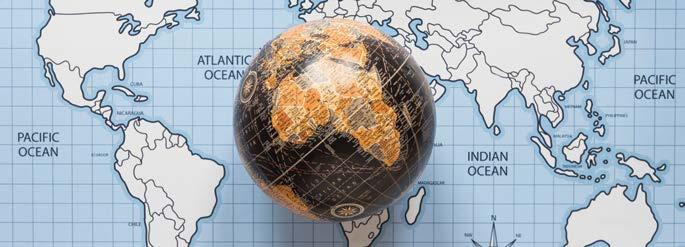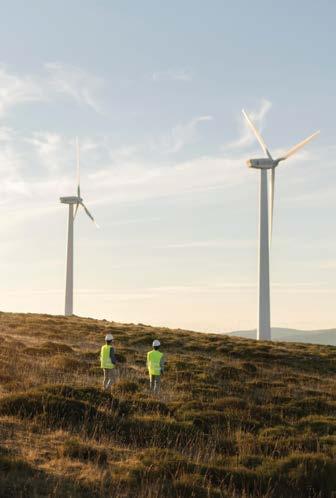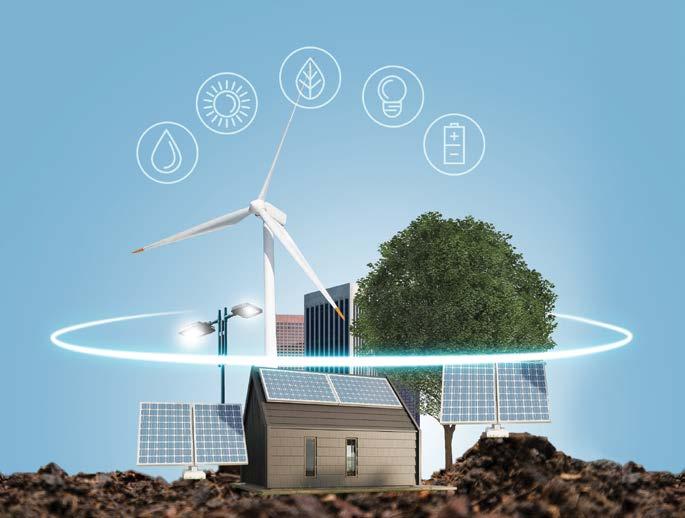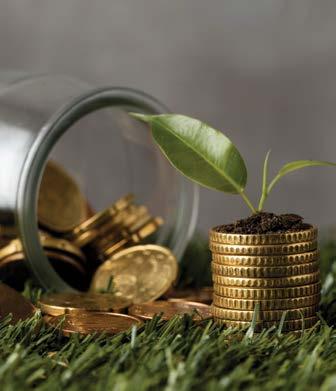AMCHAM MENA REGIONAL COUNCIL
The AmCham MENA Regional Council (AmCham MENA Council) was established in 2005 and now comprises the AmChams of Abu Dhabi-UAE, Dubai-UAE, Bahrain, Egypt, Jordan, Kuwait, Lebanon, Oman, Palestine, Qatar and Tunisia.
AmCham Dubai started its two-year tenure as Chair of the Council in April 2024. The Council’s Secretariat resides at AmCham Egypt.
MISSION
To promote trade and investment between the United States and the MENA region.
OBJECTIVES
• Foster increased awareness among MENA region manufacturers and producers for potential business opportunities with the U.S.
• Promote closer ties with the U.S. market.
• Support and promote various investment and trade initiatives.
• Coordinate formal programs focusing on the promotion of U.S. business opportunities.
• Foster increased collaboration between members of the Council. Effectively link the different organizations and institutionalize their ongoing collaboration with the U.S. Chamber of Commerce. Organize regional trade and investment conferences and exhibitions.
www.amchammena.org
THE MENA LANDSCAPE
The Middle East and North Africa (MENA) region is a geographic classification for a group of countries extending from Morocco in northwest Africa to Iran in southwest Asia. The diversity of countries makes for a heterogeneous region, encompassing a variety of income levels, economic landscapes, standards of living, and main imports and exports. There is also a diversity of definitions for this region. Some, like the World Bank, include Djibouti and Sudan in northeast Africa, or Turkey and Malta in Europe; others make a distinction of “the Arab MENA region,” excluding these countries as well as Iran and Israel.
In terms of the business and economic environment, this report looks at MENA as three major groups: North Africa, the Levant and the Gulf, excluding the non-Arab countries Turkey, Iran and Israel. North Africa includes Algeria, Egypt, Libya, Morocco, and Tunisia; the Levant covers the Palestinian territories, Jordan, Syria, Lebanon and to some extent Iraq; and the Gulf encompasses the oil-driven economies of the Gulf Cooperation Council (GCC)—Bahrain, Kuwait, Oman, Qatar, Saudi Arabia and the United Arab Emirates (UAE).
This report focuses on recent trends in investment and trade between the United States and the 11 members of the AmCham MENA
Regional Council: Bahrain, Egypt, Jordan, Kuwait, Lebanon, Oman, the Palestinian territories, Qatar, Tunisia, and the UAE’s Abu Dhabi and Dubai.
The prominent feature of the North Africa group is its abundant labor force, supported by a large young population, and its range of high- and low-skilled jobs. North Africa’s service sector is diversified and promising, drawing the interest of international and regional investors in sectors such as logistics and maritime services, shipbuilding and, most importantly, tourism. As a result, national governments across North Africa aim to increase their service exports regionally and internationally.
The MENA region is endowed with significant natural petroleum resources that have drawn in global capital in oil-related industries. The region’s oil production averaged around 30.4 million barrels per day in 2023, a slight drop from 31.1 million barrels per day in 2022, dominated by the GCC. After decades concentrating on oil products, though, many Gulf countries are now adopting new strategies to unlock their green energy potential and diversify exports.
Lastly, the Levant countries are the regional home of authentic folkloric arts and crafts, and vocational talent. Despite ongoing political instability in this area, these countries are also involved in agriculture and different cross-regional services.

Arab MENA Demographics (2022/23)
Much of the trade in goods and services across MENA is done within the framework of multilateral and bilateral trade agreements. All 17 Arab MENA members are parties to the Greater Arab Free Trade Area (GAFTA), in effect since 1998; Egypt, Jordan, Morocco, and Tunisia are also members of the Arab Mediterranean Free Trade Agreement (Agadir Agreement). Nine MENA countries are part of the Euro-Med partnership, and 12 are signatories in the European Free Trade Association (EFTA, comprising Iceland, Liechtenstein, Norway, and Switzerland).
All the North African countries are members of the African Continental Free Trade Area (AfCFTA), which launched in 2019 and creates a single continental market for goods and services for 54
Source: World Bank
of the 55 member states of the African Union, excluding Eritrea. On October 7, 2022, Egypt and Tunisia, along with six other African countries, commenced trading under the AfCFTA Guided Trade Initiative (GTI), launched to pilot the treaty’s framework.
The Gulf group comprises the GCC, a customs union with deeper levels of liberalization compared with the other two MENA groups. The GCC is also connected with the North Africa group via the Organization of the Petroleum Exporting Countries (OPEC) and Organization of Arab Petroleum Exporting Countries (OAPEC).
To date, only four Arab MENA countries have a Free Trade Agreement (FTA) with the United States: Bahrain, Jordan, Morocco and Oman.
3 AmCham MENA Metric Total/Average Total population (million) 493.3 Total land area (million sq. km) 11.2 Average population density (people/sq. km) 43 Population growth rate (%) 1.5 Total labor force (million) 158.9 Top three countries by land area (million sq. km) Algeria 2.4 Saudi Arabia 2.2 Libya 1.8 Top three countries by population (million) Egypt 110.9 Algeria 44.9 Iraq 44.5 Top three countries by population density (people/sq. km) Bahrain 1,852 West Bank and Gaza 817 Lebanon 547 Top three countries by labor force (million) Egypt 32.6 Saudi Arabia 16.6 Algeria 13.0

Major Trade Agreements with MENA Countries MENA

LibyaEgypt
UAEBahrainMoroccoQatarJordanAlgeriaOmanTunisiaKuwaitLebanon
SaudiArabia Yemen
Iraq West Bank& Gaza Syria
Note: Dark bars denote AmCham MENA Council countries.
Source: World Bank, Global Economic Prospects, Jan 2024
4 AmCham MENA
(%) Bahrain Palestinian Territories
and
US
Mercosur Non-Arab MENA AGADIR
COMESA EuroMed Partnership BRICS UAE 2021 2022 2023e 2024f 2025f Oil exporters 3.4 6.2 1.6 3.6 3.5 GCC countries 3.3 7.4 1.1 3.6 3.8 Oil importers 5.5 3.9 3.0 3.2 3.7 Arab MENA average 3.8 5.8 1.9 3.5 3.5
GDP Growth Trends
Arab MENA
GAFTA
FTAEFTA
AFCFTA
14.1 3.8 3.4 2.8 2.8 2.8 2.6 2.5 1.4 1.2 0.8 0.2 -0.5 -0.5 - 2.9 -3.7 - 5.5
MENA GDP Growth by Country (2023)
The Business Setting
The MENA region continues to improve as a location for doing business but still lags its developing country peers. There is ample room for improvement, especially as differences in the business environment across the region are large.
Access to finance remains North Africa’s top priority to private sector development. This is a crucial challenge for small and medium enterprises (SMEs) in several MENA countries: MENA’s loans-to-SMEs ratio is the lowest in the world (2% of GDP), even though SMEs account for 60+% of employment. Many countries are increasing access to finance for SMEs (Algeria, Egypt, Jordan, Morocco, GCC countries), expanding mobile banking (Jordan, Morocco, GCC countries), and developing Islamic finance (Bahrain, Egypt, Kuwait, Morocco, Qatar, Saudi Arabia, and the UAE).
Countries are also implementing measures to improve workers’ skills and boost labor demand
2023 Legatum Prosperity Index for MENA
in the private sector. Egypt, Jordan, Morocco, and Saudi Arabia all have active labor market policies aimed at benefitting women and youth. Having ensured relatively high levels of access to schools (about 80% for primary education), MENA countries now seek to improve the quality and efficiency of education as the region still performs poorly on international tests. Finally, several countries have implemented policies to tackle corruption and improve accountability in public funds.
The 2023 Legatum Prosperity Index (LPI) assesses countries based on key characteristics of inclusive societies, open economies and empowered people. Created by the Londonbased think tank Legatum Institute, the index divides 167 countries into eight geographic regions covering 99.4% of the global population and ranks countries according to 12 indicators within three domains. MENA is ranked seventh of the eight regions, above Sub-Saharan Africa.
*AmCham MENA Council countries
Source: Legatum Prosperity Index
5 AmCham MENA
Country Global rank 2023 Israel United Arab Emirates* Qatar* Kuwait* Bahrain* Oman* Saudi Arabia Jordan* Turkey Morocco Tunisia* Algeria Lebanon* Egypt* Iran Iraq Libya Syria Yemen 33 44 46 60 62 67 79 86 95 96 99 109 112 121 126 140 146 159 166 -10 -8 +6 -4 -2 0 +2 +4 +6 +8 +10 +12 +14 Natural Environment Education Health Living Conditions Enterprise Conditions Investment Environment Social Capital Governance Personal Freedom Safety & Security Pillar change, 2013–2023 Infrastructure & Market Access Economic Quality Score change Improving Deteriorating Global prosperity comparison, 2013–2023 40 45 50 55 60 65 70 2023 2021 2019 2017 2015 2013 Global average Middle East and North Africa -7.4 -5.5 Prosperity score
MENA Council Countries by Key Prosperity Pillars (2023)
According to the LPI, the MENA region’s primary weaknesses are institutional. However, the region has seen improvement in the Education pillar over the past decade through better adult skills and pre-primary education, and in Living Conditions due to better connectedness and protection from harm, as well as in Market Access and Infrastructure.
Egypt’s Enterprise Conditions rank improved over a 10-year period from 131st to 62nd in 2023, credited to a raft of new legislation promoting
Source: Legatum Prosperity Index
tax reforms, a more flexible exchange rate regime and safeguards to enhance investor confidence.
Algeria was the most-improved country in the region, rising six places on the LPI over 10 years. Substantial government investments in communications infrastructure, including four new fiber optic submarine cables connecting to Europe and high-quality mobile networks, led to a nine-rank improvement in the Communications sub-category, under Infrastructure and Market Access.
6 AmCham MENA Global Rank Safety and Security Personal Freedom Governance Social Capital Investment Environment Enterprise Conditions Infrastructure and Market Access Economic Quality Living Conditions Health Education Natural Environment 1. UAE 44 50 146 38 78 32 22 22 26 47 33 42 119 2. Qatar 46 23 149 47 51 43 26 36 13 48 38 69 134 3. Kuwait 60 51 119 87 99 63 76 64 51 42 43 75 137 4. Bahrain 62 95 156 98 55 35 60 31 56 45 50 63 142 5. Oman 67 40 142 83 88 58 48 48 63 67 55 83 153 6. Jordan 86 74 116 68 152 50 41 67 121 61 100 90 146 7. Tunisia 99 122 86 63 156 95 105 94 111 73 79 95 147 8. Lebanon 112 128 100 143 165 104 104 101 161 83 102 65 116 9. Egypt 121 142 160 140 161 86 62 82 136 93 107 105 156
Inclusive Societies Open Economies Empowered People
Economic Freedom in MENA
The Heritage Foundation’s Index of Economic Freedom ranks 184 countries on 12 factors (dubbed ‘freedoms’) including property rights, government integrity, judicial effectiveness, tax burden, government spending, fiscal health, business freedom, labor freedom, monetary freedom, trade freedom, investment freedom and financial freedom. Each economic freedom is graded on a scale of 0-100 (higher is better), and the average of these 12 grades
is the country’s Economic Freedom score.
Economic freedom in MENA has fluctuated during the past half-decade but has generally scored near the world overall average. In the 2024 index, the UAE was the regional leader in economic freedom, followed by Qatar and Bahrain. Saudi Arabia’s overall score improved on the back of reforms positively affecting the tax burden, fiscal health, monetary freedom and trade freedom.
Index of Economic Freedom Rankings for Arab MENA Countries
*AmCham MENA Council countries
Note: Data for Iraq, Libya, Syria, Yemen and the West Bank and Gaza are unavailable.
Source: The Heritage Foundation, 2024
Global Economic Diversification Index
First published in 2020 by the UAE’s Mohammed Bin Rashid School of Government, the Global Economic Diversification Index (EDI) ranks countries on the extent of their economic diversification in multiple dimensions including economic activity, international trade, government revenues, and digitalization in economic activities. The 2024 edition covers 112 countries, using 2000 as the baseline year for tracking progress. The MENA region has been improving steadily
in the post-COVID years, especially in the area of government revenues. Several GCC countries have introduced value-added and excise taxes, the UAE has rolled out a corporate tax, and Oman is exploring an income tax. However, there remains much room for improvement.
The UAE and Saudi Arabia have made the most significant economic diversification progress, thanks to a conscious effort to diversify into the non-oil sector.
7 AmCham MENA
Global Rank 2024 (1-184) Regional Rank 2024 Regional Rank 2023 Classification Change in Overall Score UAE* 22 1 1 Mostly Free 0.1% Qatar* 28 2 2 Moderately free 0.2% Bahrain* 54 3 3 Moderately Free 1.4% Oman* 56 4 5 Moderately Free 7.5% Saudi Arabia 69 5 7 Moderately Free 6.2% Kuwait* 90 6 8 Mostly Unfree 3.2% Jordan* 92 7 4 Mostly Unfree -0.9% Morocco 101 8 6 Mostly Unfree -2.7% Egypt* 146 9 9 Repressed 0.2% Tunisia* 150 10 10 Repressed -7.8% Lebanon* 154 11 11 Repressed 5.9% Algeria 164 12 12 Repressed 1.6%
MENA Country Rankings on the Global EDI (2024)
Note: Algeria, Iraq, Libya, Syria, Yemen, the West Bank and Gaza, and others are not included due to insufficient data.
* AmCham MENA Council countries
The World Competitiveness Yearbook (WCY), published by Switzerland’s International Institute for Management Development (IMD) since 1989, evaluates 64 economies based on the availability of comparable international data
verified by a network of partner institutions. WCY rankings are based on 336 criteria in four main areas: economic performance, government efficiency, business efficiency and infrastructure.
Arab MENA Countries in the World Competitiveness Yearbook
* AmCham MENA Council countries
Source: International Institute for Management Development (IMD)
8 AmCham MENA
Global Rank Regional Rank EDI Scores (2000) EDI Scores (2023) Change in Overall Score Lebanon* 41 1 99 102.1 3.1% Jordan* 45 2 101.5 101.9 0.4% Tunisia* 50 3 97.7 100.7 3.1% Morocco 54 4 96.9 100 3.2% Egypt* 67 5 94.6 96.5 2.0% UAE* 70 6 90.8 95.7 5.4% Bahrain* 78 7 92.7 93.7 1.1% Saudi Arabia 91 8 82.8 90.5 9.3% Qatar* 97 9 85.6 88.7 3.6% Oman* 102 10 80.9 87.7 8.4% Kuwait* 104 11 82.6 86.2 4.4%
Source: Mohammed Bin Rashid School of Government (MBRSG)
Overall Rank 2023 Overall Rank 2022 Change in Ranking UAE* 10 12 +2 Qatar* 12 18 +6 Saudi Arabia 17 24 +7 Bahrain* 25 30 +5 Kuwait* 38 -Jordan* 54 56 +2
Climate Action in the Arab MENA Region
MENA countries played host to the last two United Nations Climate Change Conferences: COP27 in Egypt and COP28 in the UAE. The two countries used the platform to energize the international response, kickstart green initiatives and spotlight the green financing and investment needs of the region and the developing world at large. COP28, held in Dubai in December 2023, marked the first global stocktake of efforts to address climate change under the 2015 Paris Agreement, which committed countries to limiting increases in global temperatures to 1.5 degrees Celsius above pre-industrial levels. Key outcomes from the two-week conference include:
• New funding for loss and damage: Built upon the COP27 decision to set up a loss and damage fund supporting vulnerable countries, a new dedicated fund under the UN Framework Convention on Climate Change (UNFCCC) was adopted with commitments exceeding USD 600 million.
• Global Goal on Adaptation (GGA): Parties at COP28 agreed on targets for the GGA framework, which aims to guide adaptation planning and strategies globally. Climate finance was recognized as crucial for climate action, with notable pledges to funds like the Green Climate Fund (GCF) and commitments to support vulnerable countries. However, current finance flows fall short of what’s needed, highlighting the importance of reforming financial mechanisms and scaling up funding to meet the needs outlined in the global stocktake. The Parties continued discussions on setting a new collective goal on climate finance in 2024, starting from a baseline of USD 100 billion per year, to support the implementation of national climate plans.
• Linking Climate Action with Nature Conservation: Governments were urged to integrate conservation of ecosystems, biodiversity, and carbon stores into their national climate action plans. The decision aligns with the goals of the Kunming-Montreal Global Biodiversity Framework, which includes commitments to protect and restore 30% of the planet’s land and oceans by 2030.
• Ramping up Climate Solutions: The UN Climate Change High-Level Champions launched the 2030 Climate Solutions roadmap, with field-tested measures that need to be scaled up and replicated to reduce greenhouse
gas emissions and address adaptation gaps. Major announcements include:
o 125 countries signed the UAE Climate and Health Declaration, mobilizing USD 1 billion for climate and health solutions.
o 137 Heads of State committed to food systems transformation under the COP28 UAE Declaration on Sustainable Agriculture.
o The EU allocated EUR 175 million to the Methane Finance Sprint to reduce methane emissions.
• The Way Forward: COP28 set the stage for implementing the Paris Agreement by finalizing negotiations on the enhanced transparency framework, paving the way for improved reporting and review mechanisms. UN Climate Change showcased and tested transparency tools during the conference, with the final versions expected to be available to Parties by June 2024.

9 AmCham MENA
During COP27, held in Sharm El-Sheikh in November 2022, four initiatives were launched to accelerate global climate action:
• Greening national investment plans: Led by Egypt’s Ministry of Planning and Economic Development and supported by the UN Development Program, this initiative helps African and other developing countries design economic policies that account for the impact of climate change, quantify mitigation and adaptation efforts, and create roadmaps for achieving net zero emissions.
• Low Carbon Transport for Urban Sustainability (LOTUS): Facilitated by the UN Environment Program, SLOCAT Partnership, and Boston Consulting Group, this initiative will improve access to low carbon and resilient urban mobility solutions.
• Sustainable Urban Resilience for the Next Generation (SURGe): This initiative addresses the existing barriers to reducing urban emissions and help urban systems become more resilient to climate change.
• Solid waste management: This initiative aims to recycle at least 50% of the solid waste produced in Africa by 2050.
Compared to other regions, MENA currently receives a small amount of climate finance, estimated at USD 16 billion a year by the non-profit analysis and advisory organization Climate Policy Initiative (CPI). CPI estimates the region’s initial financing needs at USD 186 billion, based on Nationally Determined Contributions (NDCs) submitted by countries.
The World Bank Group created the Middle East & North Africa Climate Roadmap (2021-2025) to help the region drive transformational climate action and build low-carbon, resilient societies. The roadmap prioritizes four key areas: food systems and water, energy transition and low carbon mobility, climatesmart cities and resilient coastal economies, and sustainable finance. The MENA Climate Roadmap is supported by USD 10 billion from the World Bank and International Finance Corporation for climatesmart projects and sustainable policy reforms, which will leverage another USD 2 billion in private sector financing.

10 AmCham MENA
MENA-U.S. TRADE AND INVESTMENT TRENDS
Economic development supported through enhanced trade and investment ties can advance U.S. goals of peace and stability in the Arab MENA region. U.S. Free Trade Agreements (FTAs) with Bahrain, Jordan, Morocco, and Oman, along with Trade and Investment Framework Agreements (TIFAs) with many other MENA countries provide the context for policy dialogues aimed at increasing bilateral MENA-U.S. trade flows and developing stronger intra-regional economic ties.
According to the U.S. Trade Representative, U.S. goods and services trade with the entire Middle East
Arab MENA-U.S. Trade Trends (USD billion)
(including non-Arab countries) totaled an estimated USD 212 billion in 2022. The U.S. had a goods and services trade deficit with the Middle East of USD 4.9 billion that year, with the U.S. exporting USD 103.6 billion worth of goods to the region and importing USD 108.5 billion. U.S. exports to the Middle East accounted for 3.5% of overall U.S. exports in 2022. The U.S. trade balance with the region shifted from a goods trade surplus of USD 1.5 billion in 2021 to a goods trade deficit of USD 13.2 billion in 2022. The U.S.’s services trade surplus with the region was USD 8.3 billion in 2022, down 32.6% from 2021.
* AmCham MENA Council countries
Source: U.S. International Trade Commission (USITC)
11 AmCham MENA
13.2 19.3 22.9 15.4 8.5 13.0 23.8 16.9 26.2 29.7 36.7 27.6 16.6 27.6 39.5 34.2 63.7 60.0 59.6 62.3 45.1 49.4 57.7 64.9 2016 2017 2018 2019 2020 2021 2022 2023 MENA oil and gas exports MENA non-oil and gas exports Total imports from the U.S. 52.7% 27.7% 9.7% 3.5% 2.8% 2.5% 1.1% Saudi Arabia Iraq Libya UAE Algeria Kuwait Others
and Gas
Oil
Exports 2023
ARAB MENA-U.S.
TRADE TRENDS
MENA-U.S. Trade Balance by Country (2023, USD billion)
*AmCham MENA Council countries
Source: USITC
MENA-U.S. Trade by Country and Industry (2023)
MENA Imports from the U.S.
Source: USITC By Country By Industry
*AmCham MENA Council countries
12 AmCham MENA
Total = USD 64.9 billion
0.0 2.4 0.2 0.9 3.1 2.9 1.0 1.7 8.8 1.5 1.6 2.4 2.0 16.0 6.5 51.1 0.2 0.4 0.5 0.6 1.2 1.5 1.7 1.9 2.3 2.9 3.8 4.5 4.7 13.9 24.9 64.9 Syria, West Bank and Gaza*, Yemen Libya Lebanon* Tunisia* Algeria Jordan* Bahrain* Oman* Iraq Kuwait* Morocco Egypt* Qatar* Saudi Arabia UAE* Total MENA Imports from the U.S. Exports to the U.S. 36.4% 6.4% 6.1% 38.3% 21.4% 7.2% 6.9% 5.8% 4.5% 3.5% 2.9% 2.6% 2.4% 1.9% 0.9% 0.8% 0.7% 0.4% UAE* Saudi Arabia Egypt* Morocco* Qatar* Oman* Jordan* Bahrain* Iraq Algeria Lebanon* Tunisia* Libya Kuwait* Yemen, Sudan, West Bank & Gaza* 30.5% 11.7% 8.9% 8.8% 6.1% 4.8% 3.9% 3.2% 3.1% 2.6% 16.5% Transportation Equipment Computer & Electronic Products Chemicals Machinery, except Electrical Miscellaneous Manufactured Commodities Agricultural Products Food & Kindred Products Fabricated Metal Products Electrical Equipment, Appliances & Components Oil & Gas Others
MENA Exports to the U.S.
Total = USD 51.1 billion
By Country
By Industry (Non-Oil and Gas)
*AmCham MENA Council countries
Source: USITC
MENA-U.S. BILATERAL FREE TRADE AGREEMENTS
Bilateral FTAs are designed to reduce trade barriers between two countries and create a more stable and transparent business climate. These reciprocal agreements promise to eliminate tariff and nontariff barriers on trade in goods and services between the two countries and to establish rules in trade-related areas such as investment, intellectual property rights, labor and the environment.
The U.S. has FTAs in force with 20 countries, four of which are in Arab MENA: Jordan (2001), Morocco (2006), Bahrain (2006), and Oman (2009). The total value of U.S. imports from these countries under the FTAs in 2023 was USD 4.4 billion, representing 61% of all imports from these countries and 7% of total imports of all MENA countries.
Arab MENA Tariff-Free Exports to the U.S. (USD million)
Source: USITC
13 AmCham MENA Miscellaneous Manufactured Commodities Transportation Equipment Plastics and Rubber Products Food and Kindred Products Chemicals Apparel and Accessories Primary Metal Manufacturing Petroleum & Coal Products Others Saudi Arabia Iraq UAE* Algeria Jordan* Libya Egypt* Qatar* Oman* Kuwait* Morocco* Bahrain* 37.0% 10.9% 5.5% 4.8% 4.6% 4.4% 31.4% 17.2% 12.7% 6.1% 5.7% 4.8% 4.7% 3.9% 3.2% 3.1% 3.0% 2.0% 1.7%0.4% 0.0% Tunisia* Lebanon* Sudan, West Bank & Gaza*, Yemen 43.7% 10.8% 10.6% 9.3% 4.8% 2.7% 1.6% 1.5% 15.1%
2,039.3 2,627.5 2,501.4 944.5 1,312.1 880.7 510.0 723.5 572.8 389.1 585.1 433.2 74% 86% 85% 54% 48% 53% 46% 39% 57% 33% 37% 27% 2021 2022 2023 2021 2022 2023 2021 2022 2023 2021 2022 2023 Jordan Oman Bahrain Morocco FTA exports Share of total exports
MENA-U.S. SPECIAL TRADE PROGRAMS
In addition to formal bilateral FTAs, the U.S. has established federal programs to encourage international trade and investment. For MENA, the most important are the Generalized System of Preferences (GSP) and the Qualifying Industrial Zones (QIZ) protocol.
The GSP is the largest and oldest U.S. trade preference program. Established by the Trade Act of 1974, the GSP promotes economic development by providing preferential duty-free entry for over 3,500 types of products from 120 beneficiary developing countries (BDCs) and territories. According to the U.S. International Trade Commission (USITC), for an imported article to be GSP‐eligible, it must be the growth, product or manufacture of a BDC, and the sum of the cost or value of materials produced in the BDC plus the direct costs of processing must equal at least 35% of the appraised value of the article at the time of entry into the United States. Eight Arab MENA countries and territories are eligible to export under the GSP: Algeria, Egypt, Iraq, Jordan, Lebanon, Tunisia, West Bank and Gaza, and Yemen.
Certain articles are prohibited by law from receiving GSP treatment, including most textile and apparel articles. As an exception, the U.S. has entered into agreements providing for the certification and GSP eligibility of handmade, folkloric products with 13 countries, including Egypt, Jordan and Tunisia. This agreement allows certain wall hangings and pillow covers to be eligible for GSP treatment.
The GSP program, which must be renewed periodically, was last renewed by the Trump administration on March 23, 2018, through the end of 2020 (and was applied retroactively to January 1, 2018). At that time, the administration announced it would increase efforts to ensure that GSPeligible countries are fulfilling the 15 requirements
for participation in the program, which include maintaining standards of intellectual property rights and workers’ rights, respecting arbitral awards in favor of U.S. citizens or corporations, and providing the U.S. with equitable and reasonable market access.
Despite legislative efforts to renew it, the GSP program expired on December 31, 2020, at which point U.S. importers had to resume paying duties and tariffs on these products. Once the program is renewed and applied retroactively, importers of GSP products would be refunded for tariffs paid since January 1, 2021.
During the 117th Congress, the U.S House of Representatives and Senate each passed bills that would revise and renew the GSP program. Key elements include new GSP eligibility criteria on the environment, human rights, rule of law, poverty reduction and anti-corruption; interested persons would also be allowed to petition at any time for a review of a BDC’s compliance with the eligibility criteria. The legislation would require country eligibility reviews every three years in addition to a study on rules of origin, women’s economic empowerment, and GSP utilization rates to help least-developed countries receive more program benefits.
Since May 2022, the legislation, now labeled H.R. 4521 - United States Innovation and Competition Act (USICA) of 2021, has been pending a conference committee to resolve differences between the two versions. That process was delayed, however, when the new Congress was seated in January 2023. In December 2023, the U.S. House Ways and Means Committee introduced a bill that, if passed, would resume USICA negotiations with an aim to bring back the GSP.

14 AmCham MENA
MENA GSP-Eligible Exports (2023)
Total = USD 615 million
Lebanon's Top GSP Exports
(% of country's GSP exports)
. Miscellaneous Manufactured Commodities (62.9%)
. Foods Nesoi (13.2%)
Grain & Oilseed Milling Products (5.6%)
Fruits & Veg Preserves & Specialty Foods (5.4%)
Egypt's Top GSP Exports
(% of country's GSP exports)
. Resin Syn Rubber Artf & Syn Fibers/Fil (16.5%)
. Plastics Products (10.1%)
. Fruits & Veg Preserves & Specialty Foods (6.7%)
Qualifying Industrial Zones or QIZs are a trade program unique to the Middle East. The protocol was established by Congress in 1996 to support the Middle East Peace Process and build economic ties between Israel and its neighbors. It allows the West Bank and Gaza, as well as specific zones in Egypt and Jordan, to export certain products to the U.S. duty-free. Eligible products must be manufactured in the designated zones and contain a specified percentage of inputs from Israel. As of December 2023, Egypt had 1,191 companies in more than 20 industrial zones participating in the QIZ program. Jordan has at
Jordan’s Top GSP Exports
(% of country's GSP exports)
. Motor Vehicles Part (41.4%)
. Fruits & Veg Preserves & Specialty Foods (19.1%)
. Foods Nesoi (17.1%)
Tunisia's Top GSP Exports
(% of country's GSP exports)
Grain & Oilseed Milling Products (75.7%)
Fruits & Tree Nuts (4.4%)
. Other Wood Products (4.1%)
*AmCham MENA Council countries
Source: U.S. Department of Commerce and USITC
least 16 QIZ industrial zones.
For products to be eligible for duty-free entry into the U.S., QIZ factories must add at least 35% to the value of the article. In Jordan, the 35% content must include at least 11.7% from a Jordanian QIZ and 8% from Israel (7% for high-tech goods); the remainder may be fulfilled by content from a Jordanian QIZ, Israel, the U.S. or West Bank and Gaza. For Egypt, the 35% minimum content can include inputs from Israel, Egypt or the U.S. Egypt must contribute at least one-third (11.7%) of the minimum content requirement, while Israel must contribute 10.5%.
15 AmCham MENA
Tunisia* 42.7% Egypt* 33.3% Lebanon* 21.8% Algeria 1.1% Jordan* 0.6% Iraq 0.2% Yemen 0.1% West Bank* 0.1%
MENA QIZ Exports (2023)
Sources: U.S. Department of Commerce and USITC
16 AmCham MENA
56.9 128.9 70.2 61.9 819.5 1,222.5 1,506.5 1,214.1 2020 2021 2022 2023 Jordan Egypt
QIZ Export Trends (USD million)
Total Value: USD 1.3 billion
Country’s Top QIZ Exports Share of Country's QIZ Exports Egypt Apparel 87.9% Fruits & Veg Preserves & Specialty Foods 8.8% Apparel Accessories 0.7% Jordan Apparel 86.0% Pharmaceuticals 6.2% Fruits & Veg Preserves & Specialty Foods 2.5% West Bank and Gaza Vegetables & Melons 34.9% Grain & Oilseed Milling Products 16.0% Fruits & Veg Preserves & Specialty Foods 15.3%
MENA-U.S. INVESTMENT TRENDS
World FDI Flows to MENA (USD billion)
17 AmCham MENA
Investment in non-GCC Investment in GCC MENA's share of global FDI 12.9 12.4 10.3 7.8 14.4 20.2 24.7 27.7 44.0 37.1 2.4 2.2 4.0 3.5 4.0 2018 2019 2020 2021 2022 Source: UNCTAD - 4.1 4.8 4.4 0.6 0.6 2.0 0.4 1.7 -1.9 -1.3 26.4 11.1 4.2 1.2 0.7 0.4 0.2 0.0 -2.1 -2.3 Kuwait Egypt Oman Jordan Tunisia Lebanon WestBankand Gaza Bahrain UAE Qatar 2021 2022 Source: UNCTAD
Net FDI Inflows to MENA Council Countries (USD million)
MENA-U.S. International Investment Agreements
In addition to FTAs, bilateral investment treaties (BITs) are agreements between two countries that establish rules to govern foreign investment in each other’s countries. Designed to give investors better access to foreign markets, BITs are mutually beneficial for investors, who are often developed countries, and investees, who are often developing countries such as those in the MENA region. A BIT’s terms facilitate and protect foreign investments by the developed countries; in turn, they help developing countries improve their policy framework to attract more FDI. The United States has established BITs with five MENA countries: Morocco (1991), Egypt (1992), Tunisia (1993), Bahrain (2001), and Jordan (2003).
The U.S. also has a number of Trade and Investment Framework Agreements (TIFAs) with
MENA countries. Sometimes seen as an initial step toward an FTA, TIFAs establish the strategic framework and principles upon which to base dialogue for expanding and strengthening trade and investment. Since 1999, the U.S. has signed TIFAs with 13 MENA countries, including the entire GCC.
Many MENA countries are working to create more investment-friendly environments outside of the formal BIT or TIFA structures. Several—including Egypt, Tunisia, and Algeria— have made changes to their investment laws. The UAE has reformed its bankruptcy law, and Saudi Arabia has promised reforms to make the economy more accessible for foreign investors. These efforts will make countries across the region more attractive to American and other international investors.
Investment and Trade Agreements between the U.S. and MENA Countries
Algeria
Bahrain*
Egypt*
Iraq
Jordan*
Kuwait*
Lebanon*
Libya
Morocco*
Oman*
Qatar*
Saudi Arabia
Syria
Tunisia*
UAE*
West Bank and Gaza*
Yemen
*AmCham MENA Council countries
Source: USTR
18 AmCham MENA
FTA BIT TIFA
MENA Council Trade and Investment Dashboard
MENA Council Trade Flows (2022, USD million)
Note: Data for West Bank and Gaza not available. Sources: USITC and UNCTAD
million)
Note: Data for West Bank and Gaza not available. Sources: UNCTAD, U.S. Bureau of Economic Analysis
19 AmCham MENA
U.S. Direct Investment in MENA Council Countries (2022, USD
Total exports to the world Total exports to the U.S. Share of U.S. in exports Total imports from the world Total imports from the U.S. Share of U.S. in imports Bahrain 30,194 1,830 6.1% 15,537 734 4.7% Egypt 48,845 3,201 6.6% 85,844 6,601 7.7% Jordan 12,380 3,280 26.5% 27,290 1,330 4.9% Kuwait 101,270 2,330 2.3% 32,356 4,720 14.6% Lebanon 4,370 201 4.6% 19,503 980 5.0% Oman 66,456 2,710 4.1% 38,704 1,090 2.8% Qatar 13,0964 2,950 2.3% 33,479 3,810 11.4% Tunisia 18,561 700 3.8% 26,656 704 2.6% UAE 532,797 7,380 1.4% 420,510 18,700 4.4% Total MENA Council 974,938 26,252 2.7% 771,686 43,009 5.6%
Total FDI Inflows Inflows Stock Bahrain -720 155 1,951.3 Egypt 1,453 12,708 11,399.9 Jordan 28 190 1,137.0 Kuwait 89 685 757.8 Lebanon NA 304 457.9 Oman 178 2,269 3,715.7 Qatar -511 3,917 76.1 Tunisia -20 130 713.4 UAE 1,619 16,862 22,736.6 Total MENA Council 2,095 37,599 45,087.1
U.S. Investment
INVESTMENT PRIORITY SECTORS
The MENA region is currently navigating through a complex political and economic landscape, arising from geopolitical tensions, rising interest rates and the overall tightening of financial conditions, and shifting trade trends as a response to climate change mitigation. The region is particularly vulnerable to climate change, mainly in the form of higher temperatures, reduced rainfall and rising sea levels. Threats to food and water security have spurred governments to focus on the wellbeing of their citizens while adopting sustainable measures in their economic and investment strategies.
These strategies differ, of course, across the region. Oil-exporting countries are pursuing ambitious decarbonization policies and diversifying their economies to be less reliant on income from fossil fuels. Oil-importing countries, which rely on manufacturing, tourism and a variety of other sectors, are pushing green policies to reduce greenhouse gas (GHG) emissions and adapt to the ongoing impacts of climate change.
In November 2023, Saudi Arabia won the rights to host World Expo 2030 in Riyadh. Preparation for this event will drive the kingdom to channel investment into economic projects across diverse sectors through the remainder of the decade. Saudi Arabia, which has made large-scale event tourism a priority in its development plans, is also hosting the Asian Football Confederation (AFC) Asian Cup in 2027 and the Asian Winter Games in 2029. It has also bid to host the FIFA World Cup in 2034.
Healthcare
The COVID-19 pandemic focused attention on the need to expand national healthcare capacity. Even now after the crisis abated, MENA countries have continued to focus on advancing their healthcare systems and improving the well-being of their citizens. According to a 2023 report by Informa Markets, the MENA healthcare sector is estimated to post a compound annual growth rate (CAGR) of 7% between 2020 and 2025.
According to the Global Wellness Institute (GWI),
International market forces are also influencing the trajectory of regional investments. With the Russia-Ukraine war disrupting energy supplies, Europe is looking for alternate sources of natural gas for its electricity needs. At the same time, there is strong global sentiment for moving away from fossil fuels entirely, which drives demand for renewable and green energy. Both scenarios present opportunities for MENA countries.

spending on the wellness economy in MENA increased by 32% between 2020 and 2022. The GWI measures the wellness economy across 11 sectors that enable consumers to pursue activities, choices, and lifestyles that lead to a state of holistic health. These sectors encompass industries focused on mental wellness, physical activity, wellness real estate, workplace wellness, wellness tourism, spas, thermal/mineral springs, healthy eating, nutrition, weight loss, personal care, and beauty.
20 AmCham MENA







Top Wellness Markets in MENA (2022, USD billion)







Private Sector Engagement
The GCC has a pipeline of USD 53.2 billion worth of healthcare projects in progress, with Saudi Arabia accounting for the largest share (19.2%) followed by Kuwait (12.9%), the UAE (10.3%), and Oman (2.1%).
According to Colliers International, Saudi Arabia will require 29,000-47,000 additional hospital beds by 2030, requiring investments of USD 16.2-26.3 billion, mostly from the private sector. In October 2022, Saudi Arabia’s health ministry announced that over the next five years it would give a green light to 100 projects worth around SAR 48 billion (USD 12.8 billion), to be undertaken in cooperation with the private sector. The ministry aims to raise the private sector’s contribution to the healthcare system to 35% by 2030.
Health Insurance
Within MENA, GCC countries have led the trend towards privatizing health insurance and assigning the role of providing it to private insurance companies. The total health insurance gross written premiums (GWP) in the GCC were estimated at more than USD 16 billion in 2022.
Egypt is in the process of implementing its Universal Health Insurance System (UHIS) to provide high-quality medical services to all citizens regardless of their ability to pay. Three of the nation’s 27 governorates are currently in the system, with the rollout expected to be complete by the end of 2027. Legislation is in the works to enhance private sector participation in the UHIS.
Morocco has been gradually rolling out its social


In the UAE, KPMG estimates that the overall healthcare spending will reach around USD 26 billion and account for 6% of the country’s GDP by 2028, up from 4.3% in 2018. The UAE has around 700 healthcare projects under development with total investments of USD 60.9 billion, mostly carried out by the private sector.
Egypt has several projects ongoing for integrated medical cities, which incorporate specialized medical, diagnostic and research centers as well as hotel, shopping and recreational facilities on the same campus. In March 2024, the Ministry of Health and Population announced a new integrated medical city project to be built near the New Administrative Capital.
security system, known as Assurance Maladie Obligatoire (Mandatory Health Insurance, AMO) over the years. The country’s GWP from healthcare policies is projected to reach USD 1.3 billion in 2024, up from USD 1.2 billion in 2023. Healthcare GWP is expected to post a compound annual growth rate of 8% from 2024 to 2028, resulting in a market value of USD 1.8 billion by 2028.
In November 2022, the government of Tunisia set up an umbrella social assistance program called Amen Social, merging the National Program of Assistance to Needy Families (PNAFN) and the Free Medical Assistance programs (AMG) to better identify beneficiaries eligible for subsidized or free medical assistance.
21 AmCham MENA
UAE
Algeria Kuwait
Saudi Arabia Egypt Morocco 23.1 7.6 6.8 3.9 3.7 19.8 15.8 7.9
Oman Jordan
Source: Global Wellness Institute
Digital Health
Digital health solutions have the potential to reshape the sector in the region, creating a range of new opportunities for healthcare providers and investors. For example, countries with large swaths of population in rural and remote areas can benefit from telemedicine
and health-monitoring apps that connect outpatients with care providers in urban centers.
McKinsey & Company forecasted that digital health market of Saudi Arabia and the UAE combined could reach USD 4 billion by 2026.
Healthtech Investment Trends in MENA (USD million)
Healthtech Investment in MENA (2018-2022)
Total = USD 337 million By Country By Industry
Source: Dealroom
22 AmCham MENA 76 36 16 106 73 106 2017 2018 2019 2020 2021 2022 57.2% 13.4% 3.7% 2.7% 0.6% 0.4% 0.3% 0.2% 21.4% UAE* Oman* Lebanon* Morocco Kuwait* Others Egypt* Saudi Arabia Qatar* 66.0% 20.4% 7.4% 2.6% 1.3% 0.9% 0.9% 0.4%0.1% Telemedicine Biotech & pharma Tech for hospitals & clinics Mental health Testing Femtech Digital therapeutics Pharmaceuticals Surgical equipment
Green Energy & Financing
The MENA region accounts for about 30% of global oil production and 18% of natural gas production, and also hosts significant “transition mineral” reserves. However, the energy sector contributes over 70% of the world’s carbon dioxide (CO2) emissions, and MENA is one of the regions with the highest per capita GHG emissions. Countries across the region are formulating strategies and commitments aimed at increasing energy efficiency, renewable energy production, and carbon-capture projects.
By 2050, Lebanon, Tunisia, Oman and the UAE expect to reach their carbon neutrality targets. Meanwhile, Bahrain, Kuwait, and Saudi Arabia have strengthened their pledges to reach the net zero target by 2060.
The last two United Nations Climate Change Conferences were hosted by MENA countries (COP27 in Egypt and COP28 in the UAE), mobilizing international attention, investments and initiatives focused on renewable and clean energy sources.
Major Renewable Energy Projects Under Execution in MENA
23 AmCham MENA
Project Name Type Capacity Investment (USD billion) Location Masdar-Infinity Power Wind Farm Wind power plant USD 10 billion 10.0 Sohag Governorate, Egypt Neom Green Hydrogen plant Ammonia production USD 8.4 billion 8.4 Oxagon, Neom, Saudi Arabia Sudair Solar Power Plant Solar power plant USD 8 billion 8.0 Riyadh, Saudi Arabia Noor Energy 1 Solar power plant USD 3.9 billion 3.9 Dubai, UAE Al Shuaibah PV 1 and Al Shuaibah PV 2 Solar power plant USD 2.4 billion 2.4 Mecca Province, Saudi Arabia Wind Power Project Wind power plant USD 1.5 billion 1.5 Gulf of Suez, Egypt Al Dhafra Solar Project Photovoltaic independent power producer (IPP) USD 1 billion 1.0 Abu Dhabi, UAE
Country-Specific Actions for Climate Change
Climate-smart and digital food systems transformations
Climate-smart water resource management
Increased energy efficiency and renewables
Long-term strategies and support to decouple growth from emissions
Industrial decarbonization, circular carbon economy and green competitiveness
Climate-smart urban planning
Blue economy programs
Integrated coastal zone management
Climate-smart public financial management, climate-proofing budgets and expenditure
Unlocking finance for green investment, greening financial institutions
Source: World Bank Potential Opportunities
*MENA Council countries
24 AmCham MENA
Algeria Djibouti Egypt* Iraq Jordan* Lebanon* Morocco Tunisia*
The transition to green energy sources will likely get a boost from the European Union’s Carbon Border Adjustment Mechanism (CBAM), which took effect on October 1, 2023. The CBAM requires companies that export carbon-intensive products to the EU to comply with regulations aimed at addressing GHG emissions associated with their products. This may involve providing detailed information about the carbon footprint of CBAM goods, including emissions generated during production, transportation, and any other relevant stages of the supply chain. The first stage of the CBAM’s implementation applies to aluminum, iron and steel, fertilizers, hydrogen,
Green Finance
In the 2015 Paris climate agreement, developed countries committed to assisting developing countries with climate finance. However, MENA countries are still grappling with a substantial funding gap for the effective implementation of adaptation and mitigation measures, and concurrently, the international community is also struggling to allocate funds for climate projects in the region. According to the World Bank, MENA receives the least climate finance of any region.
A 2022 UN Economic and Social Commission for Western Asia policy brief analyzed OECD data and nationally determined contributions (NDCs) and concluded that select MENA countries—including Egypt, Iraq, Jordan, Mauritania, Morocco, Palestine, Sudan and Tunisia—need a total of USD 570 billion in climate funding. Notably, Egypt, Iraq and Morocco account for USD 450 billion of this required funding. But MENA received a mere 11% of climate finance over the 2000-2020 period, with a meager 4% deriving from UN Framework Convention on Climate Change (UNFCCC) funds.
To bridge the financing gap, governments in the region should try to mobilize both public and private sources of funding. Regarding public finance, according to the International Monetary Fund, significant amounts of international public climate funds remain unused. Worldwide deposits in climate funds have totaled USD 35 billion (from USD 43 billion in pledges), but only USD 28 billion has been set aside for approved projects. By putting together bankable projects, MENA countries could try to tap into these funds. In addition, countries in the region could mobilize domestic public finance by increasing public revenues or sovereign wealth fund investments.
The World Bank has developed the Middle East and North Africa Climate Roadmap (2021-2025) to drive transformational climate action and green recovery in the region. Between fiscal years 20212023, the World Bank delivered USD 6.3 billion in
electricity and cement from non-EU countries.
Within MENA, the UAE, Bahrain, and Egypt are among the top 10 exporters of aluminum to the EU. Morocco, Egypt and Algeria are top fertilizer exporters to the EU after Russia.
The EU is assessing the possibility to extend the scope of CBAM to include organic chemical products, polymers and other inputs. It is also considering whether to factor in indirect emissions related to electricity used in the manufacturing process and related to the transportation of CBAM products. These decisions are expected by the end of 2025.
climate financing for roadmap projects and is on track to achieve a target of USD 10 billion for FY 20212025.
The MENA region should also benefit from the new Loss and Damage Fund, set up under the UNFCCC as one of the key outcomes of COP27. The operationalization of the Loss and Damage Fund was finalized during COP28, with commitments exceeding USD 600 million.
Several other climate financing platforms saw new pledges during COP28. The Green Climate Fund (GCF) saw a significant boost, with total pledges reaching a record USD 12.8 billion from 31 countries, with more contributions anticipated. Eight donor governments declared new commitments to the Least Developed Countries Fund and Special Climate Change Fund, surpassing USD 174 million to date. Additionally, nearly USD 188 million in new pledges were made to the Adaptation Fund.
Discussions at COP28 also addressed establishing a new collective quantified goal on climate finance by 2024, with consideration given to the needs and priorities of developing nations. This new goal, starting from a baseline of USD 100 billion annually, will serve as a cornerstone for crafting and executing national climate plans, to be accomplished by 2025.
In the realm of private sector funding, banks, pension funds, insurance entities and domestic capital markets can play pivotal roles in financing climate mitigation efforts (though it is more challenging to get private funding for adaptation). The private sector accounts for a substantial proportion of climate finance on a global level, increasing consistently from 2011 to 2020 to represent approximately 50% of total accumulated finance provided over the period.
To tap into these funds, MENA countries can improve their investment environment as well as use tools like sovereign green bonds or green sukuk (finance instruments compatible with Islamic law) or other methods to allow private financing of
25 AmCham MENA
public or otherwise unprofitable projects, such as co-financing. Green bonds differ from regular bonds because they are specifically designed to finance climate-related investments.
Financial institutions today make investment decisions with careful considerations to environmental, social, and governance (ESG) dimensions. Middle Eastern companies have started to recognize the long-term risks and opportunities linked to ESG, and countries in the region have also implemented reporting guidelines and mandates.
The Bahrain Bourse introduced ESG Voluntary Reporting Guidelines in June 2020 to encourage ESG disclosures among listed companies and stakeholders. This aligns with Bahrain Economic Vision 2030. The policy has already increased sustainability reporting among listed companies, leading to the Bahrain Bourse being awarded the ‘Most Sustainable Stock Exchange in the GCC Region’ in 2023.
In line with Oman Vision 2040, the Muscat Stock Exchange (MSX) in 2023 launched ESG disclosure guidelines for its listed companies, based on 30 ESG metrics. ESG reporting is voluntary in 2024 but will become mandatory starting 2025, with a filing deadline of March 31, 2025.
The Qatar Stock Exchange published optional ESG guidelines in 2016 to help listed companies incorporate these standards into their disclosures, with plans to make it mandatory in the future.
The UAE’s Sustainable Finance Working Group released its third public statement in December 2023, building upon the foundational releases of 2021 and 2022 and outlining three key objectives: enhancing sustainability-focused corporate governance and climate financial risk management, bolstering transparency through sustainability reporting, and contributing to formulating a sustainable finance
Unlocking Finance Opportunities
As a response to CBAM and other ESG requirements, companies with high GHG emissions are looking for ways to offset their emissions for reporting purposes. To that end, several MENA countries are taking steps to establish carbon credit markets, where verified climate-action projects that are reducing GHG emissions sell credits to companies with high emissions.
Saudi Arabia’s Regional Voluntary Carbon Market Company (RVCMC) plans to start a carbon credit trading exchange in mid-2024. Established in October 2022, the RVCMC is 80% owned by the Public Investment Fund, and 20% by Tadawul Group with SAR 500 million (USD 133 million) in capital.
The Africa Carbon Markets Initiative (ACMI) was
taxonomy in the UAE. Also, all listed companies on the Abu Dhabi Securities Exchange (ADX) and Dubai Financial Market (DFM) are obliged to publish a sustainability report annually that outlines their long-term strategy and impact on ESG and the wider economy. These firms must also comply with the Global Reporting Initiative standards and the UN Sustainable Stock Exchanges Initiative. The DFM launched its 2025 Sustainability Strategic Plan in 2019 to promote ESG best practices among listed companies and become the region’s leading sustainable financial market by 2025.

launched during COP27 to unlock the potential of voluntary carbon markets for financing Africa’s energy, climate and development goals. In April 2023, the UAE Carbon Alliance, a coalition of companies formed to develop and grow a carbon market in the Emirates, pledged to purchase USD 450 million worth of ACMI carbon credits by 2030.
Climate blended finance involves blending different types of financial instruments, such as grants, concessional loans, equity investments, and commercial loans, to address the financing gap for climate mitigation and adaptation efforts. This funding tool is significantly underutilized in the region, with only 89 blended finance deals worth a total of USD 25 billion recorded in MENA as of December 2023.
26 AmCham MENA
Food and Water Security
Food and water security are intertwined, and many MENA governments regard them a matter of strategic importance for their contribution to sustainability, employment, and economic growth. Both sectors are under threat from climate change-
Food and Water Security in Arab MENA
induced extreme weather events, which disrupt crop yields and water availability. The MENA region is particularly vulnerable, opening the door for innovation and investments in agriculture, water infrastructure and climate change adaptation.
Food security:
High-risk and deteriorating
High-risk and stable
Moderate risk and stable
Significant rainfall/vegetation deficit
Conflict
Water stress:
Extremely high water stress >80%
High water stress 40%-80%
Source: World Food Programme (February 2024); World Resources Institute and Earth.org (2021)
Food security
Despite representing only 6% of the world’s population, MENA is home to 12% of the undernourished population. The UN Food and Agriculture Organization (FAO) estimated that nearly one in five people in the region was likely to be food insecure in 2023, with Syria and Yemen facing particularly high rates.
MENA countries rely heavily on food imports to meet their needs, with some importing up to 80% of staple foods like wheat. Weak and non-resilient supply chains leave the region vulnerable to global
price fluctuations and external shocks. The 2022 crisis in grains and seed oil, when reduced global exports drove up food prices, underscored the fragility of MENA’s food supply systems. Inflation is also playing a significant role in driving food insecurity across all income groups, highlighting the need for inflation mitigation strategies.
The region’s food security is also threatened by climate change, economic slowdowns, and internal issues such as unstable food import systems and reliance on conventional agricultural techniques.
27 AmCham MENA
OMAN
MOROCCO
ALGERIA
TUNISIA LEBANON PALESTINIAN
TERRIT.
KUWAIT BAHRAIN QATAR UAE IRAQ JORDAN
SAUDI ARABIA
EGYPT LIBYA
SYRIA YEMEN
Global Food Security Index (GFSI) for Arab MENA Countries (2022)
MENA governments have made sustainable agriculture and food sourcing key pillars in their long-term national strategies and are calling for international cooperation and investments. For example, the Sustainable Development Strategy: Egypt Vision 2030 includes ambitious plans to modernize Egypt’s agricultural sector and incorporate technology to improve efficiency and reduce waste. To achieve these goals, Egypt launched its Nexus of Water, Food and Energy (NWFE) Program in 2022 to attract partners for specific projects.
The UAE’s National Food Security Strategy 2051 calls for enhancing domestic production, agribusiness trade, food safety, and nutrition. The country has
*AmCham MENA Council countries
Source: The Economist Intelligence Unit
launched the India-Middle East Food Corridor project with India and Israel to strengthen regional food supply chains.
Investments in research are essential to formulate nuanced responses to food insecurity and develop sustainable solutions. Empowering small-scale initiatives and grassroots solutions, particularly in agricultural technology, is crucial for increasing sustainability and self-sufficiency in food production. For example, a team of young Moroccans developed Ghallaty, a sensor-based, motorized basket that follows farmers in the field and indicates which plants are ripe, making the harvesting process more efficient and easier for the workers.
28 AmCham MENA
Country and Regional Rank me World Rank /113 Overall Score /100 Affordability /100 Availability /100 Quality and Safety /100 Sustainability and Adaptation /100 1. United Arab Emirates* 23 75.2 86.7 73.8 81.3 55.2 2. Qatar* 30 72.4 88.6 72.9 71.7 51 3. Oman* 35 71.2 88.6 64.3 73.2 53.6 4. Bahrain* 38 70.3 91.3 60.1 76.3 47.3 5. Saudi Arabia 41 69.9 83.2 67.2 71.6 53.7 6. Jordan* 47 66.2 85.3 59.8 55.4 58.9 7. Kuwait* 50 65.2 80.0 62.9 67.8 45.5 8. Morocco 57 63 74.6 42.9 73.1 60 9. Tunisia* 62 60.3 74.5 54.1 58.8 49.7 10. Algeria 68 58.9 66.8 57.3 54.7 54.2 11. Egypt* 77 56 65.2 54.2 45.9 55.8 12. Yemen 111 40.1 46.4 26.9 48.7 37.8 13. Syria 113 36.3 32.0 26.6 50.8 38.4
Water security
Water security in MENA remains a critical concern amid the impacts of climate change. With regional temperatures projected to rise by up to 4°C by 2050 and nearly half the population already facing extreme heatwaves, the region’s rapid environmental degradation increases its vulnerability. According to IPI Global Observatory, 13 of the 20 most water-stressed countries are located in MENA, leading to water rationing and supply restrictions in some areas. This scarcity, compounded by political conflicts and instability, further weakens adaptive capacities.
The MENA region faces a fundamental challenge in agriculture due to limited water resources, with the lowest per capita water availability globally, according to the World Bank. Agriculture, a primary livelihood for many in the region, consumes up to 85% of available water resources, leading to reduced crop yields and threatening food security.
Inadequate water resource management exacerbates these challenges, with inefficient water use, lack of investment in water-saving technologies, and unregulated exploitation of underground water resources contributing to resource degradation and increased pressure. Sound water governance decisions will play a crucial role in mediating climate impacts on livelihoods.
With extremely limited sources of natural freshwater, MENA governments are investing heavily in infrastructure for treating, recycling and desalinating water. According to a 2024 GlobalData report, the region is the world’s largest market for water and sewage construction projects, with projects totaling USD 390.6 billion.
The MENA region accounts for 48% of the world’s desalination capacity, and seawater desalination
now contributes to more than 90% of all daily water requirements in the GCC, mainly powered by solar energy and to a more limited extent wind energy. According to the MENA Desalination Market report by Ventures Onsite, the GCC has the world’s highest water desalination capacity of 81%. The International Desalination Association lists Saudi Arabia, the UAE and the U.S. as the top three producers of desalinated water, respectively, in the world. The seawater desalination capacity of GCC countries is expected to grow by 37% during the next five years, fueled by investments of up to USD 100 billion.
According to the 2023 MENA Desalination Projects Report, there are USD 39.3 billion in desalination projects in the works, with Saudi Arabia accounting for 37% of those investments and the UAE 26%.
Egypt’s Ministry of Housing, Utilities and Urban Communities has a strategic plan for desalination that includes building 46 new plants with a total capacity of 9 million cubic meters of water per day by 2050. The focus is on the coastline and governorates outside the Nile Valley, to reduce consumption of Nile waters.
Jordan’s National Conveyance Project will build a desalination plant at the Red Sea port of Aqaba with an annual capacity of 300 million cubic meters of water per year, along with a 300+ kilometer pipeline to transport the water to Amman.
In September 2023, Saudi Arabia’s Crown Prince Mohammed bin Salman announced the establishment of a global water organization based in Riyadh, aiming to address water challenges through expertise exchange, technological advancement, innovation, and project funding.

29 AmCham MENA
International Support
International development agencies are helping MENA countries bolster their food and water security and sustainability. The US Agency for International Development (USAID) is working with Egypt and Lebanon to improve agribusiness capacity and export potential, and food safety and certification. USAID also has programs with Jordan and the Palestinian Territories to reduce water waste, strengthen water management systems, and train farmers in sustainable irrigation techniques.
As part of a USD 5.5 million food security package launched in 2022, the FAO and the European Bank for Reconstruction and Development is helping Egypt, Jordan, Lebanon, Morocco, and Tunisia fund projects to develop long-term resilience to global shocks in food supply. The GIZ, Germany’s state-owned sustainable development agency, has also been supporting food and water security projects across the region.
GIZ-Backed Food and Water Security Projects in MENA
Project Title
Green and inclusive promotion of smalland medium-sized enterprises
Nile Delta Water Management Programme (NDWM)
Country Duration Objective
Algeria
Egypt*
April 2022 – April 2023
November 2022-October 2024
Improve marketing and export advisory services for agrifood businesses in Algeria by developing training and support instruments for processors and exporters.
Improve the framework conditions for efficient use of the water supply and wastewater management, as well as for agricultural irrigation in the Nile Delta.
Restoration of Peace, Livelihoods and Economic Cycles in Anbar (RePLECA)
AFA 2050 study: Soil Protection and Soil Rehabilitation for Food Security - Elaboration of a medium-term development strategy for the Agence Foncier Agricole (AFA)
Iraq
Tunisia*
November 2021May 2023
September 2021-February 2023
Boosting yields of small-scale farms and farming households. Improving employment prospects in the upstream and downstream sectors of the agriculture and food industry.
Improve AFA’s capacities through modernization and digitalization, aiming to establish a modern and functional land development authority.
*MENA Council countries Source: GOPA AFCS
30 AmCham MENA
Artificial Intelligence
PwC estimates that by 2030, artificial intelligence (AI) could contribute a staggering USD 15.7 trillion to the global economy, surpassing the combined current output of China and India. This contribution will stem from two main sources: USD 6.6 trillion from increased productivity and USD 9.1 trillion from benefits to consumers. PwC estimates that the Middle East will account for about USD 320 billion or 2% of the total global benefits of AI in 2030.
AI’s Projected Contribution to GDP in 2030
Top 3: GCC 4: Saudi Arabia
USD 135.2 billion (12.4% of GDP)
The financial sector leads AI investments and is expected to contribute 13.6% to the region’s GDP by 2030. Governments are integrating AI into public sector operations, with potential cost savings of up to USD 7 billion annually, even with a high proportion of citizens working in government services. AI applications in the travel, transportation, and energy sectors also offer significant economic potential, but challenges include regulatory adaptation and talent shortages.
UAE
USD 96.0 billion (13.6% of GDP)
Egypt
USD 42.7 billion (7.7% of GDP)
USD 45.9 billion (8.2% of GDP)
Countries across the GCC are investing in research and development to advance AI technologies, including generative AI (GenAI), to unlock opportunities for businesses and society alike.
In late 2023, the Abu Dhabi-based technology holding group G42 partnered with OpenAI, the American research and development company that created ChatGPT, to deliver AI solutions to the UAE and regional markets, particularly in financial services, energy, healthcare and public services. In August 2023, the G42 company Inception released Jais, an Arabic Large Language Model developed in collaboration with the UAE’s Mohamed bin Zayed University of Artificial Intelligence (MBZUAI). Jais, a 13-billion parameter bilingual model, can extend the benefits of GenAI to the Arabic-speaking world.
Also in August, the U.S.-based AI investment company New Native launched GAIA, a MENAfocused GenAI accelerator with a USD 160 million fund backed by Saudi Arabia’s National Technology Development Program and the Saudi
Source: PwC
Data and Artificial Intelligence Authority.
The Investment Promotion Agency Qatar (Invest Qatar) and Microsoft signed a memorandum of understanding (MoU) in 2022 to foster innovation in Qatar’s digital sector. In January 2024, Invest Qatar launched Ai.SHA, a chatbot powered by Microsoft’s Azure OpenAI service to field queries about Qatar’s business environment and opportunities.
In January 2024, Boston Consulting Group (BCG) published a survey of 1,400+ C-suite executives in 50 global markets and across 14 industries about AI in their businesses. BCG found that 93% of respondents in the Middle East are planning to increase investment in AI and GenAI. About 85% of Middle East respondents intend to boost overall technology investments in 2024, with Asia-Pacific and Africa respondents closely trailing at 80% and 77%, respectively. However, only 11% of executives reported that more than a quarter of their workers have received training in GenAI tools, indicating much room for improvement in upskilling.
31 AmCham MENA
Bahrain Kuwait Oman Qatar
AI Regulatory Landscape
The growing use of AI presents policy challenges such as fragmented data governance, privacy issues, legal and intellectual property issues, model transparency, and ethical considerations. This calls for a robust regulatory framework to ensure safe and responsible AI deployment. Currently, entrepreneurs in MENA face a dynamic AI regulatory landscape, with each country adopting a unique approach.
In Egypt, the Egyptian Charter for Responsible AI, introduced by the Egyptian National Council for Artificial Intelligence in April 2023, sets forth ethical principles for AI development, including human-centeredness, transparency, fairness, accountability, and security. Still in the initial stages of implementation, the charter comprises general and technical guidelines aimed at fostering a responsible AI ecosystem.
In Saudi Arabia, the emphasis is on innovation and ethical AI use. The government has drafted a new intellectual property law that provides a legal framework addressing privacy, data protection, commercial aspects, and intellectual property rights related to AI. Notably, it includes provisions to protect AI-generated intellectual property, distinguishing between creations with significant human involvement and those with minimal human input.
The UAE’s Minister of State for Artificial Intelligence issued its AI Ethics: Principles and Guidelines document in December 2022. The Dubai International Financial Centre (DIFC) has taken steps to regulate AI governance through its updated Data Protection Regulations. These changes, effective from September 2023, focus on regulating autonomous and semi-autonomous systems in handling personal data. Businesses are now subject to rigorous compliance standards while fostering responsible AI development.
Qatar has not yet established a comprehensive framework specifically for AI regulation, currently relying on its existing legal and regulatory structures in data protection and cybersecurity to provide a foundational layer for AI governance. Qatar’s focus on technological advancement, driven by investments in smart city initiatives and digital transformation, suggests the potential for more defined AI policies in the future.
Across the rest of the MENA region, governance varies widely. Countries like Kuwait are in the early stages of exploring AI regulation, while others like Morocco have existing data protection laws that are being aligned with international standards. Tunisia has signaled its intent to develop national AI policies, indicating a growing awareness of the importance of AI governance.

32 AmCham MENA
AI Initiatives
The GCC countries have focused on technological advancements as the engine of their economic diversification plans.
Guided by the Saudi Vision 2030, Saudi Arabia aims to create futuristic cities leveraging deep technology and metaverse initiatives. For example, the NEOM project, fueled by investments of USD 500 billion, is a multi-district economic zone spanning a variety of sectors. Through partnerships, Saudi Arabia is fostering the development of cuttingedge technologies, with the metaverse expected to significantly contribute to the economy by 2035.
Similarly, the UAE has several initiatives to promote emerging technologies, including the UAE Strategy for Artificial Intelligence and the Dubai Blockchain Strategy, using events like Expo 2020 Dubai to showcase advancements.
The Dubai Metaverse Strategy aims to turn the emirate into one of the world’s top 10 metaverse economies, with a goal to support more than 40,000 virtual jobs by 2030. In September 2022, the Dubai-based Metarverse Technology Holdings company announced investments of USD 54.5 million to create metaverse versions of Dubai and Abu Dhabi, complete with landmarks, shopping venues and other immersive digital experiences for virtual tourists. Dubai is also implementing a 3D Printing Strategy targeting various sectors and pursuing an Autonomous Transportation Strategy to reduce costs, carbon emissions, and accidents
AI and the Labor Market
In the MENA region, where youth unemployment rates are among the highest globally, the emergence of AI presents both challenges and opportunities. In addition to prioritizing infrastructure development and creating AIfriendly environments through supportive policies and investments, governments play a crucial role in promoting talent development and addressing unemployment risks by cultivating a more resilient workforce.
Capacity building is a key pillar of Egypt’s National Artificial Intelligence Strategy (NAIS), and the country aims to establish itself as a regional talent hub. The Egypt University of Informatics (EUI) opened in 2021 as the first state university dedicated to ICT, including AI programs. In April 2024, EUI partnered with the state’s Information Technology Industry Development Agency (ITIDA), and event management company Ntervento to launch the first-ever MENA edition of the Data Science and Artificial Intelligence Conference.
Saudi Arabia’s Vision 2030 plan addresses the
by transitioning to autonomous modes by 2030. Qatar is actively investing in smart city infrastructure and emerging technologies, with the Qatar Free Zones Authority (QFZA) pushing to attract global companies to build technology clusters. Notable projects like Msheireb Downtown Doha and Lusail City focus on sustainable urban development. With plans to fully electrify the public transportation system by 2030 and a focus on clean energy and eco-friendly logistics, Qatar’s smart city development presents diverse opportunities across various sectors.

potential impact of AI on reducing unemployment rates through strategic economic growth driven by innovation. The kingdom aims to make 40% of its workforce AI-literate, with policies that, if successfully implemented, could cut its unemployment rate in half by 2030.
The UAE’s Mohamed bin Zayed University of Artificial Intelligence (MBZUAI) opened in January 2021 as the world’s first graduate research university dedicated to AI.
Complementing governmental efforts, civil society organizations are instrumental in bridging the AI skills gap. MENA-focused organizations like Education For Employment (EFE) are investing in AI training for unemployed youth, augmenting their job prospects and equipping them for highgrowth industries.
Additionally, enhancing English-language proficiency and ensuring the availability of educational resources in Arabic are imperative for ensuring equitable access to AI-related opportunities.
33 AmCham MENA
Best Prospects for U.S. Exports and Investment in MENA Council Countries
Agriculture
Electricity and Renewable Energy
• Batteries/chargers
• Concentrating solar power equipment and technologies
• Electrical components
• Electric vehicles
Electricity infrastructure
Electrolyzers
• Engineering, Procurement, and Construction (EPC) contracting
• Energy efficiency
• Generators
• Green energy
Healthcare and Medicine
Cardiology and cardiovascular surgery
Consumables for clinical laboratories (i.e. tubes/glasses)
• E-health
• Education and clinical research
• Equipment and supplies for plastic surgery
• Healthcare information technology
• Integrated medical insurance solutions
• Insurance
Kidney transplantation
Laparoendoscopic surgery
• Laser treatment, nanotechnology, and molecular medicine
Digital and ICT
• 5G mobile telecommunications
• Artificial intelligence
Audiovisual equipment
Big data
• Business Process Outsourcing
• Cloud computing
• Cybersecurity
• Designing
• Drones and anti-drone systems
• E-commerce
• E-education software
Infrastructure
• Construction chemicals Construction equipment
• Construction material
• Designing
Jordan, Kuwait, Lebanon, Tunisia, West Bank
Bahrain, Egypt, Jordan, Oman, Tunisia, UAE, West Bank
• High, medium, and low-voltage applications
• Hydrogen production
• Micro hydraulic centrals
• Photovoltaic panels and related technologies
• Renewable energy storage solutions
Smart meters
Solar energy
• Technical training for facilities repair and maintenance
• Transmission grids
• Water desalination
• Wind turbines and towers
Jordan, Kuwait, Qatar, UAE, West Bank
Medical surgical sterilizers
Medical X-ray, alpha-, beta- and gamma-ray equipment
• Mobile healthcare applications
• Neurosurgery
• Ophthalmology
• Oncology
• Online medical content providers
• Orthopedic & prosthetic appliances
Pharmaceuticals
Software modules for specific fields and applications (radiology, imaging, etc.)
Egypt, Jordan, Kuwait, Oman, Qatar, Tunisia, UAE, West Bank
• E-finance applications
• Gaming
Internet of Things (IoT)
IT infrastructure
• Networking equipment
• Online and mobile solutions and services
• Smart city solutions
• Software as a Service (SaaS)
• Surveillance equipment
• Telecommunication infrastructure
• Verticals: healthtech, fintech, edtech
Bahrain, Egypt, Kuwait, Qatar, Tunisia, UAE
• Engineering and architectural services
Project consulting
• Project management
34 AmCham MENA
Medical Devices and Equipment
• Diagnostic imaging equipment
• Digital equipment
• Healthcare technology, including but not limited to telemedicine
ICU monitoring equipment
• Insurance (expatriate insurance and shortterm, tourist/travel insurance)
• Laboratory and scientific equipment
• Medical disposable supplies
Oil and Gas Equipment
• Compressed natural gas technology and peripherals
• Drilling rigs and related equipment and accessories
• Green-clean energy technology
High-tech testing and measuring equipment
Safety and Security
• Aircraft spare parts
Ammunition and artillery
Anti-terrorism technologies
• Armored vehicles
• Biometrics
• Bomb detection equipment
• Border and perimeter control equipment
• Fire detection equipment
• Improvised explosive device detectors and diffusers
Water and the Environment
Alternative desalination drain management technology
• Cleantech and environmental technologies
• Construction of water condensers
• Dam engineering and construction
• Desalination of seawater
• Drilling water wells
• Efficient water storage equipment
Energy-efficient desalination technology
Groundwater prospection
Other Sectors
Apparel
Automotive
Aerospace and Aviation
Education and Training
Franchising
Food and Beverage
Petrochemicals
Pollution Control Equipment
Transportation and Logistics
Mining and Minerals
Egypt, Lebanon, Qatar
• Mobile clinics
• Oncology and radiology equipment
• Project consulting
Specialized medical services, including for persons with special needs
• Surgical and medical equipment
• Telemedicine, E-health technology, and data management
• Training
Bahrain, Egypt, Kuwait, Oman, Qatar, UAE
• Hydraulic fracturing (“fracking”) technology and services
• Liquefied natural gas-related technology
• Natural gas vehicle technology and peripherals
Egypt, Jordan, Kuwait, Tunisia, UAE
• Public safety
Pumps, valves, and electronic devices
Radio communication systems
• Safety and property security systems
• Surveillance equipment
• Survivability equipment
• Theft and intrusion
Egypt, Jordan, UAE
Reusage of drainage water and treated wastewater
• Solid waste management
• Waste handling equipment
• Waste management and recycling technology
• Waste-to-energy projects
• Water monitoring equipment Water security
Water transfer networks
Lebanon
Kuwait, Lebanon, Qatar, Tunisia
Qatar, Tunisia, UAE
Egypt, Jordan, Kuwait, Qatar
Kuwait, West Bank
West Bank
Bahrain
Tunisia
Oman
Oman
Source: Compiled from U.S. Commercial Service, Country Commercial Guides, 2022-2024
35 AmCham MENA
AMCHAM MENA REGIONAL COUNCIL
COUNCIL MEMBERS
THE AMERICAN BUSINESS COUNCIL IN DUBAI (Council Chair 2024-2026)
Tel: +971 4 429 5812
E-mail: info@amchamdubai.org
Website: www.amchamdubai.org
AMERICAN CHAMBER OF COMMERCE IN EGYPT (MENA Council Permanent Secretariat)
Tel: +20 (2) 3333-6900 • Fax: +20 (2) 3338-1060
E-mail: mena@amcham.org.eg, info@amcham.org.eg
Website: www.amcham.org.eg
AMERICAN BUSINESS GROUP OF ABU DHABI
Tel: +971 2631-3604 • Fax: +971 2633-0489
E-mail: office@amchamabudhabi.org
Website: www.amchamabudhabi.org
AMERICAN CHAMBER OF COMMERCE IN BAHRAIN
Tel: +973 1756-8186 • Fax: +973 1756-7901
E-mail: info@amchambahrain.org
Website: www.amchambahrain.org
AMERICAN CHAMBER OF COMMERCE IN JORDAN
Tel: +962 6565-1860 • Fax: +962 6565-1862
E-mail: amcham@amcham.jo
Website: www.amcham.jo
THE AMERICAN BUSINESS COUNCIL OF KUWAIT
Tel: + 965 2473-2100, ext. 6300/6329
E-mail: communications@amchamkuwait.org, paola.delaroche@amchamkuwait.org
Website: www.amchamkuwait.org
AMERICAN LEBANESE CHAMBER OF COMMERCE
Tel: +961 198-5330 • Fax: +961 198-5331
E-mail: info@amcham.org.lb, director@amcham.org.lb
Website: www.amcham.org.lb
OMAN AMERICAN BUSINESS COUNCIL
Tel: +968 9418-9500
E-mail: info@oabc.org
Website: www.oabc.org
PALESTINIAN AMERICAN CHAMBER OF COMMERCE
Tel: +970 2297-4117 • Fax: +970 2297-4092
E-mail: info@amcham.ps
Website: www.pal-am.com
AMERICAN CHAMBER OF COMMERCE IN QATAR
Tel: +974 40206038
Email: xiomara@amchamqatar.org
Website: www.amchamqatar.org
TUNISIAN AMERICAN CHAMBER OF COMMERCE
Tel: +216 7188-3226 • Fax: +216 7188-3226
E-mail: media@tacc.org.tn, tijani.smidi@tacc.org.tn
Website: www.amchamtunisia.org.tn
www.amchammena.org

























